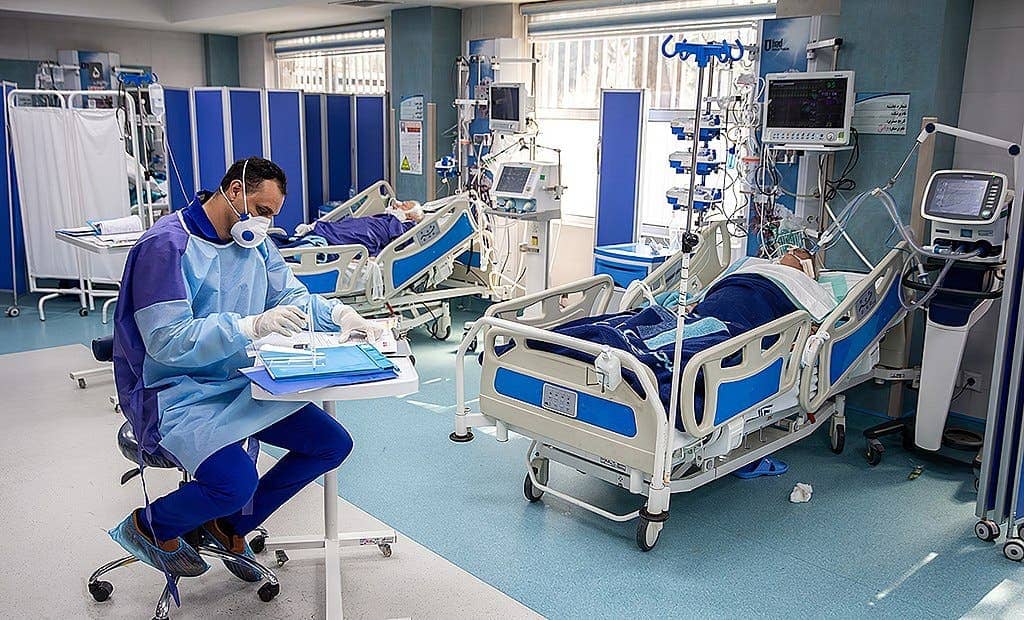A large number of critically-ill patients, those that are oftentimes in intensive care, are often left incapable of communicating with those around them. Even those that retain consciousness are prevented from speaking following procedures such as intubation.

New research is aiming to give these patients a new way to talk with those around them, using eye-tracking technology.
Reaching out
“Modern communication systems that are based on eye-tracking have long been established in the medical-therapeutic field, for example for people with advanced neuromuscular diseases,” explains Dr. Christopher Ull from the Department of General and Trauma Surgery of the BG University Hospital Bergmannsheil in Bochum.
“However, their benefits as a suitable means of communication for critically ill intensive care patients who are unable to speak have hardly been researched as yet. Especially for ventilated patients who, for example, can’t use their arms and hands for communication due to tetraplegia, such a technology seemed very promising.”
Medical staff use alternative, non-verbal communication methods to interact with patients in intensive care on a daily basis, in order to understand and meet the patients’ needs. These range from eye-blinking or lip-reading to alphabet boards or pen and paper. Still, these approaches can be slow and extremely limiting; in such cases, a new paper explains, eye-tracking systems could be used to bridge the gap.
The study, carried out by researchers at Bergmannsheil and the Faculty of Psychology in Hagen worked with 75 patients The team employed a commercially-available eye-tracking system, mounted on a mobile holder, which was positioned in the patient’s line of sight. Data from this system — which included cameras, light sources — was processed through software created by the manufacturer, which was installed on a commercial PC. The system uses near-infrared light which is reflected by a patient’s eyes to track where they are looking. The system was calibrated for each participant.
After a short training phase, the system could interact with the patient to assess their levels of pain, their mood, quality of life, even their self-esteem.
The results of this study show that it is possible to give patients in critical condition an effective way to communicate with medical personnel even when they are unable to speak. Having this ability, by itself, can go a long way towards keeping patients optimistic and in good mental health. It also allows them to request help as needed and signal potential issues to doctors, further speeding up recovery.
“The results produced by our research group show two things: firstly, that eye-tracking system can enable critically ill, non-verbal and movement-impaired people to communicate their self-assessment and feelings to their environment in a nuanced way using standardized scales and scores,” says Christopher Ull.
“Secondly, we identified indications for improvement measures in the provision of intensive care for verbally impaired patients through the use of eye-tracking technology. We are convinced that this technology can improve the interaction between patients and their intensive care team until they gain adequate ability to communicate non-verbally or to speak. However, further research is imperative for this to happen.”
Communication is a cornerstone of what it means to be human, and losing the ability to accurately convey our state and emotions to those around us — even temporarily — can be a very traumatic experience. For healthcare professionals in particular, this is also a practical problem: if patients cannot express themselves, many health issues can go unnoticed for far too long.
The results of this study show that it is possible to give patients in critical condition an effective way to communicate with medical personnel even when they are unable to speak. Having this ability, by itself, can go a long way towards keeping patients optimistic and in good mental health. It also allows them to request help as needed and signal potential issues to doctors, further speeding up recovery.
Although the study focused on intubated patients in the ICU, there is no reason the findings can’t be used to help people who find themselves unable to communicate effectively due to other circumstances, be they permanent or temporary. Fingers crossed that we see such technology used on a wide scale to allow such people to express themselves and interact with those around them in a much more meaningful way in the future.
The paper “The use of predefined scales and scores with eye-tracking devices for symptom identification in critically ill non-verbal patients” has been published in the Journal of Trauma and Acute Care Surgery.
Was this helpful?



